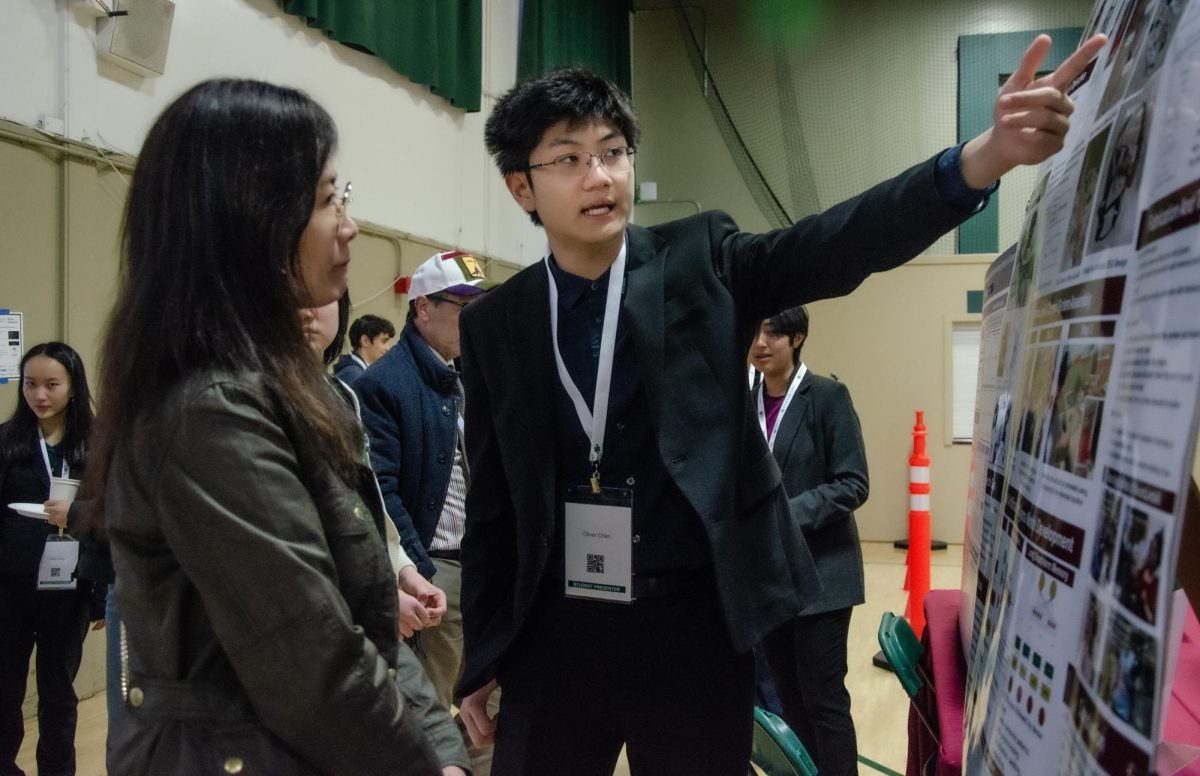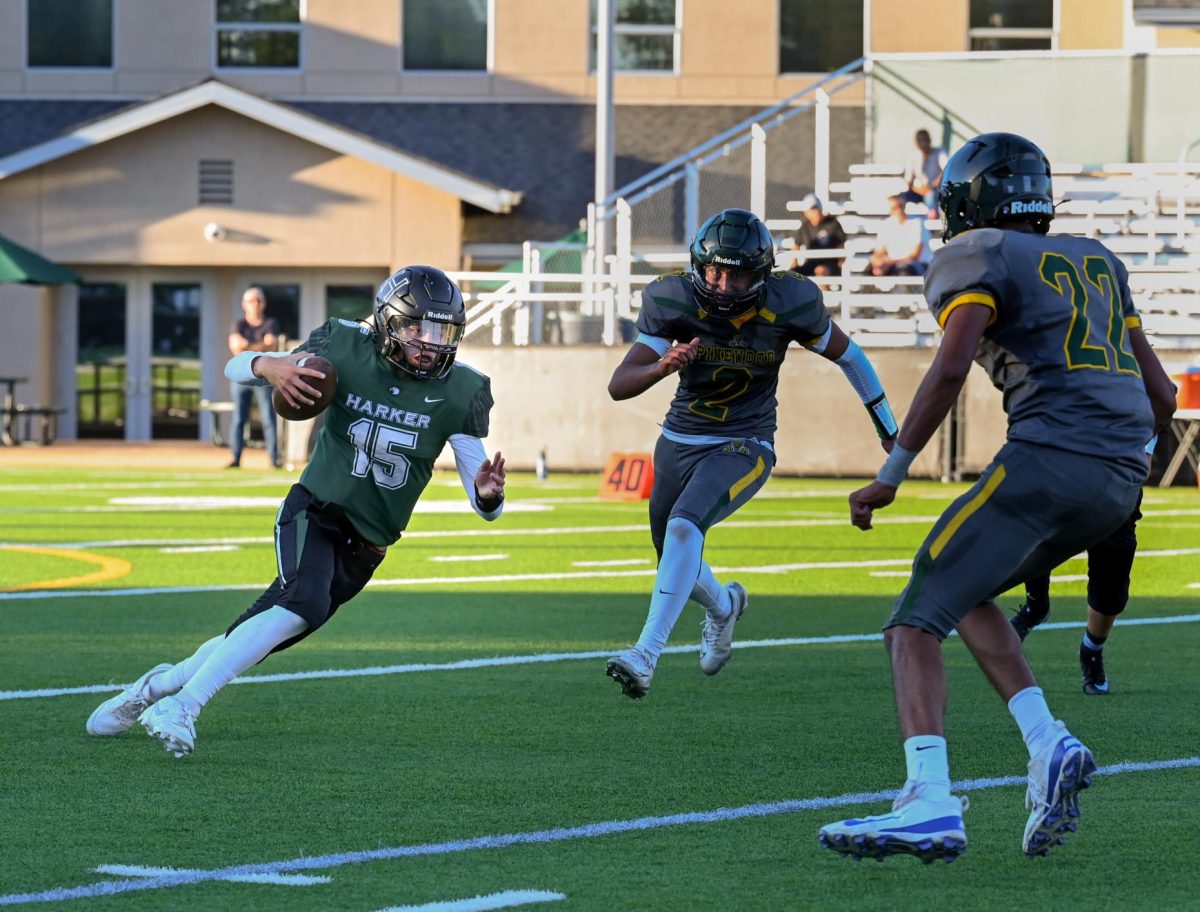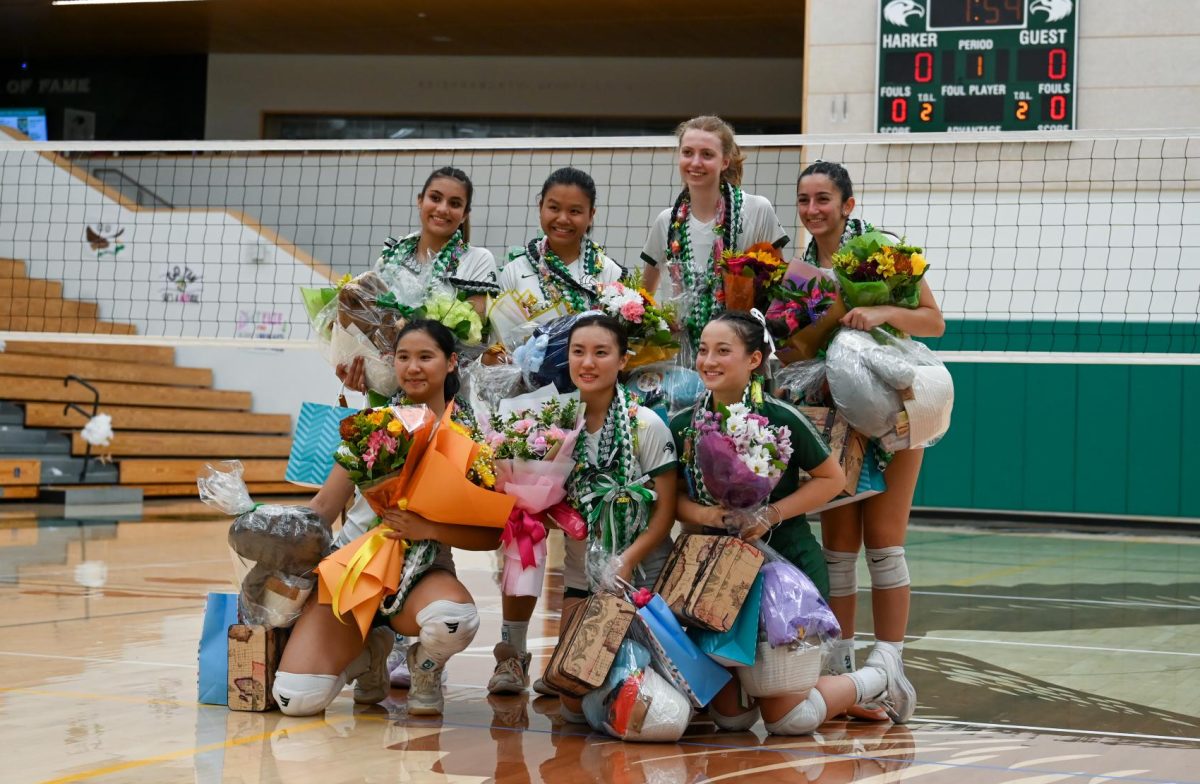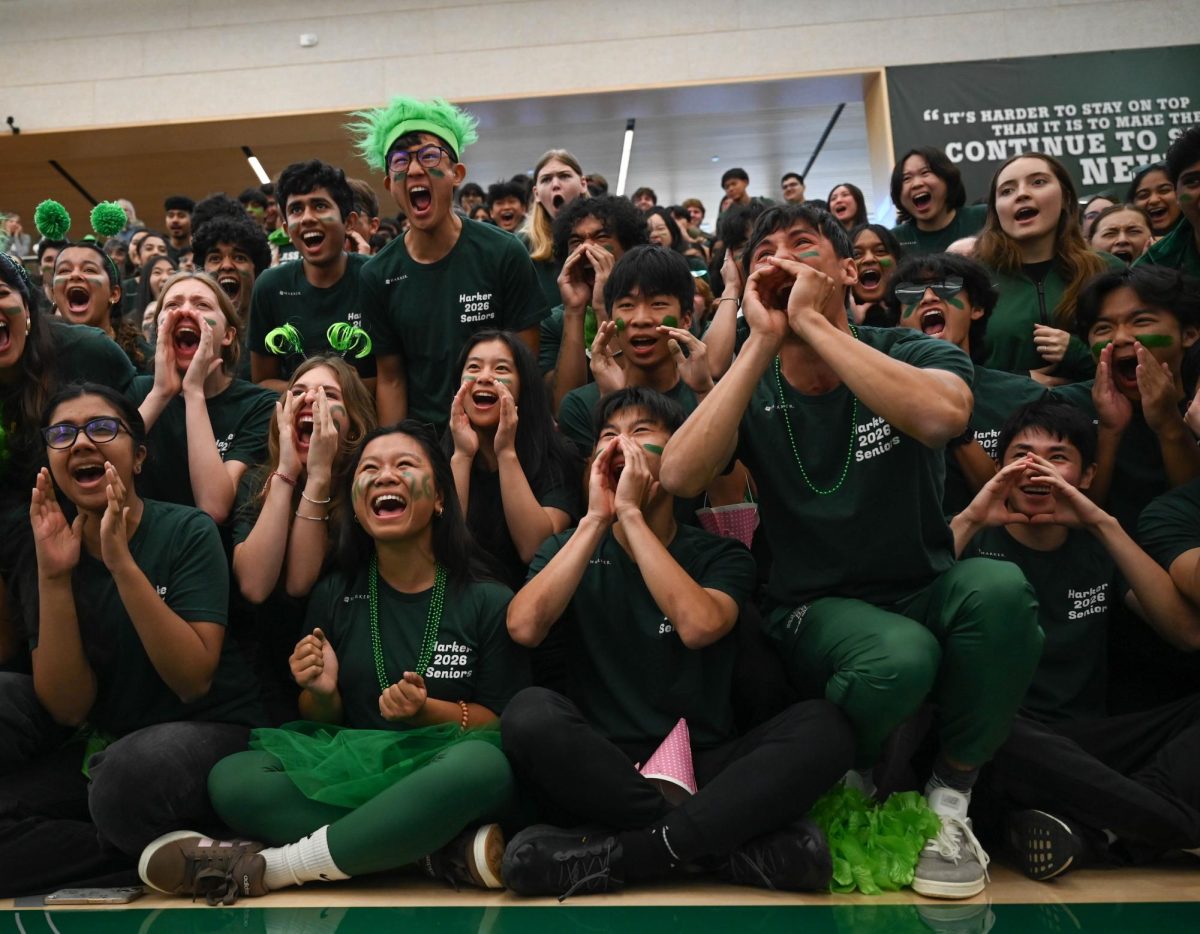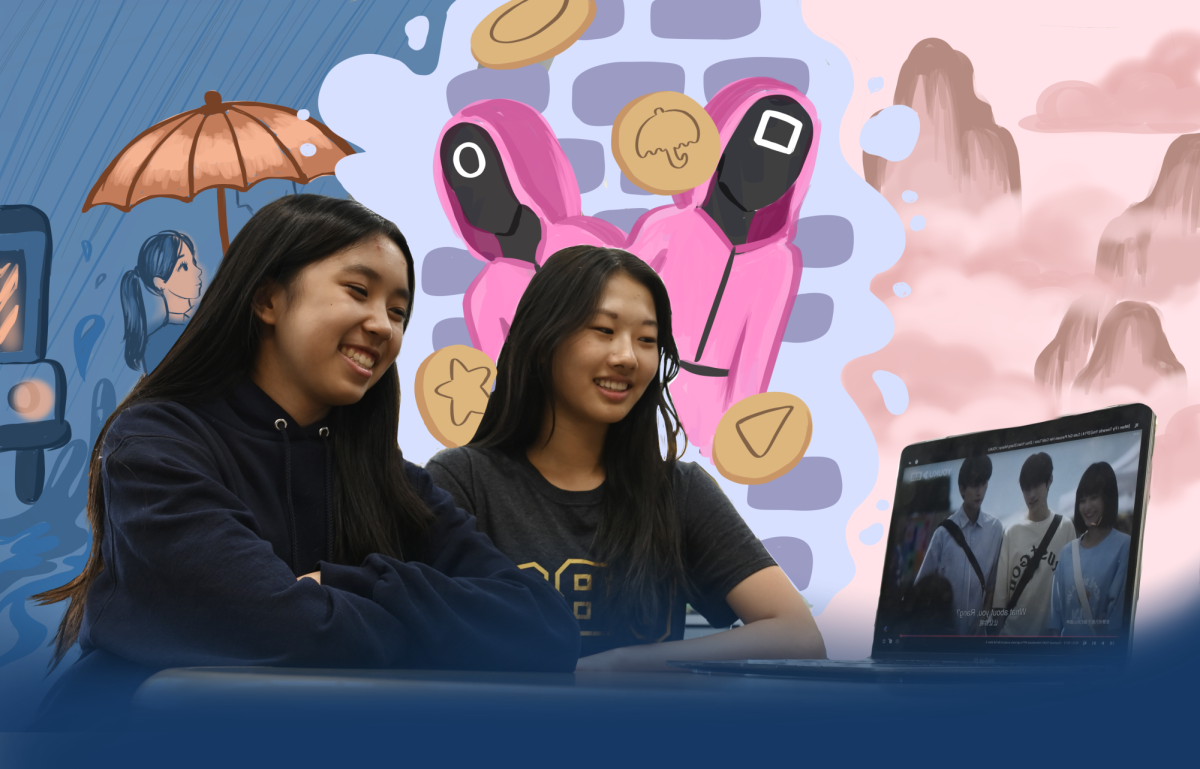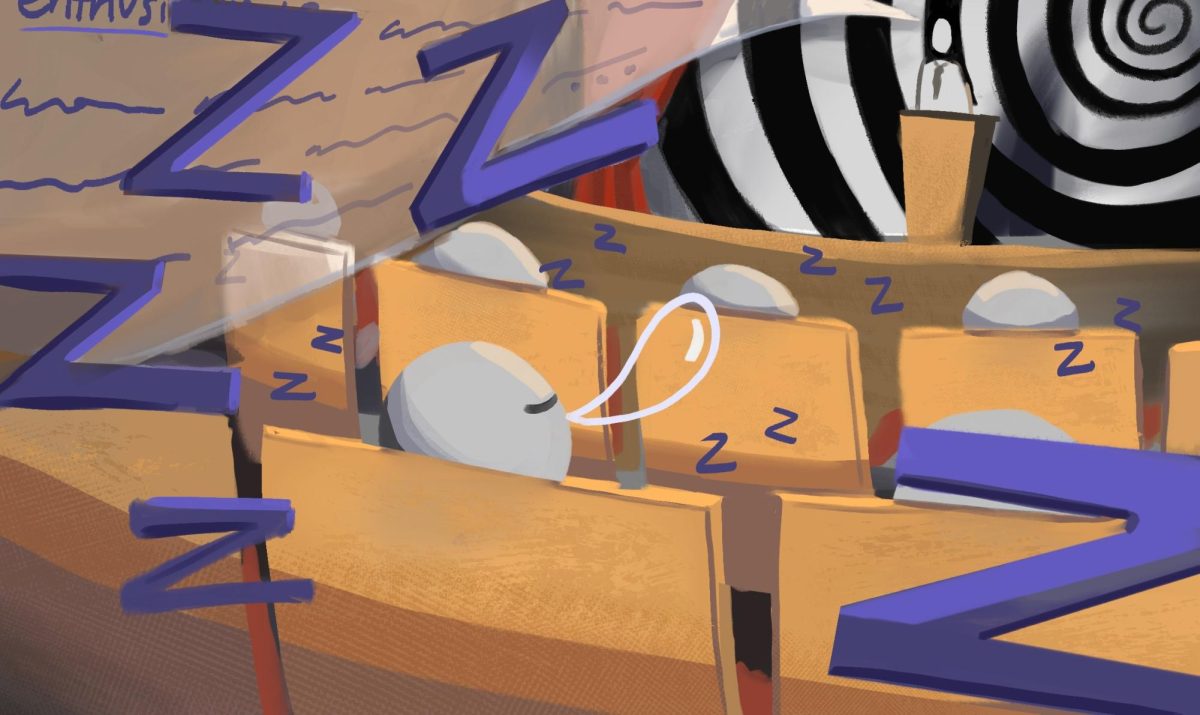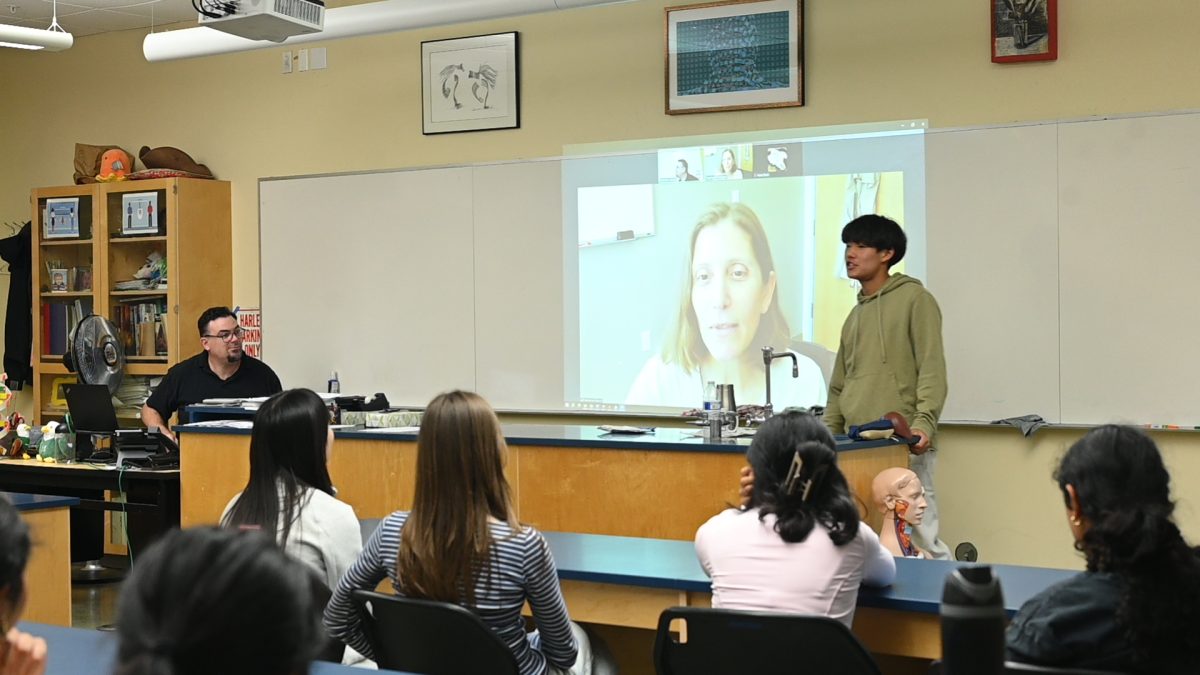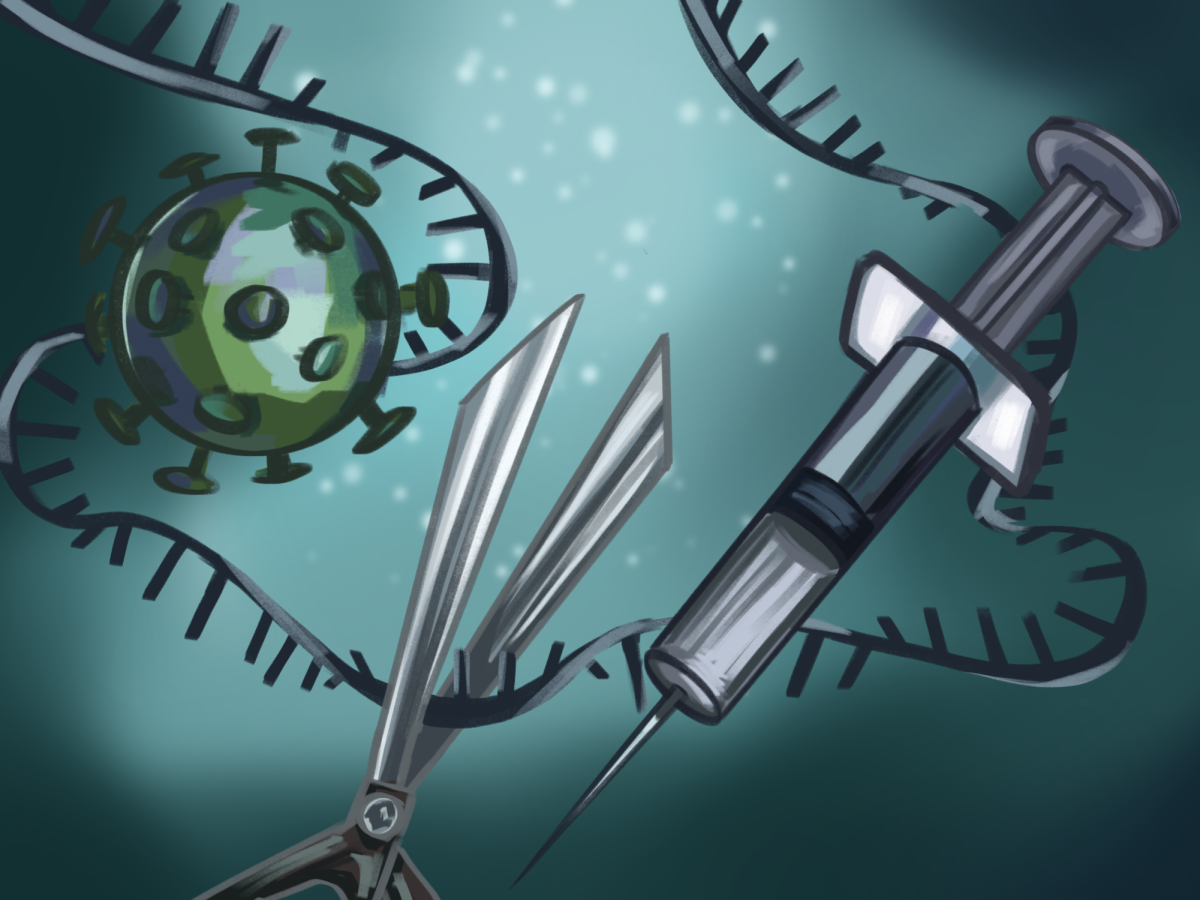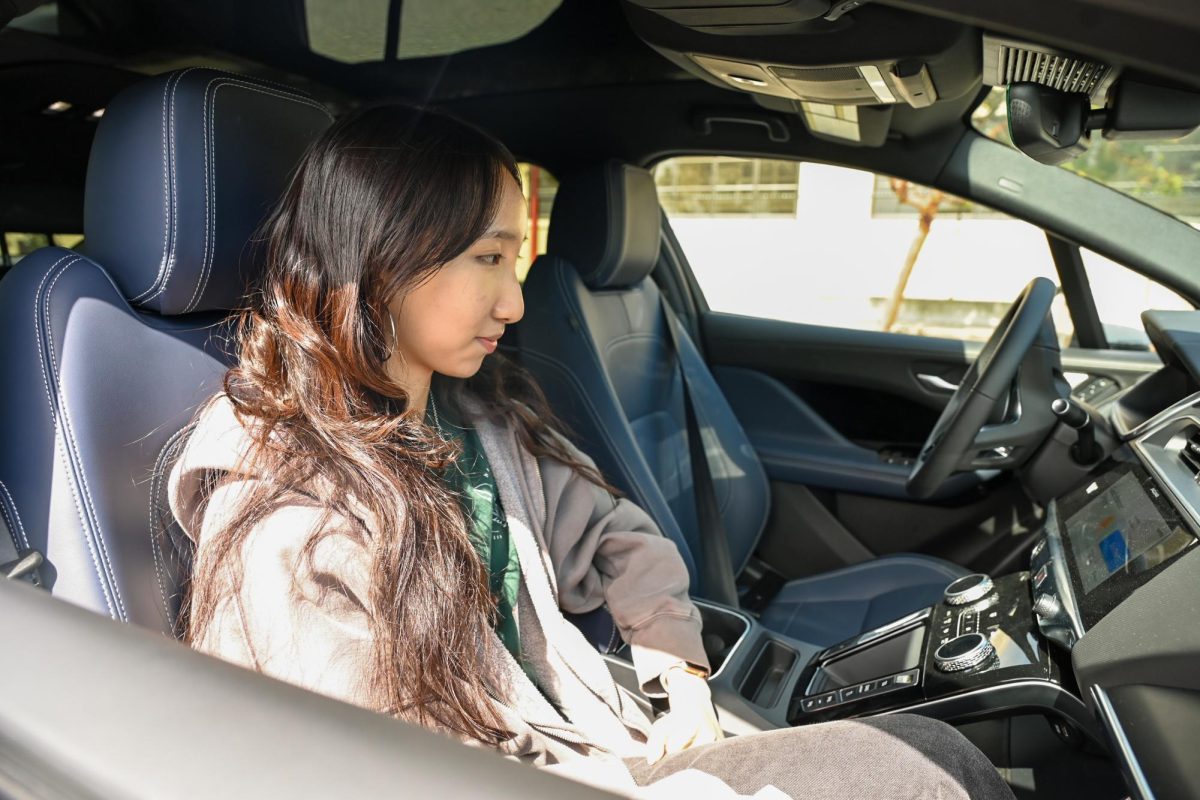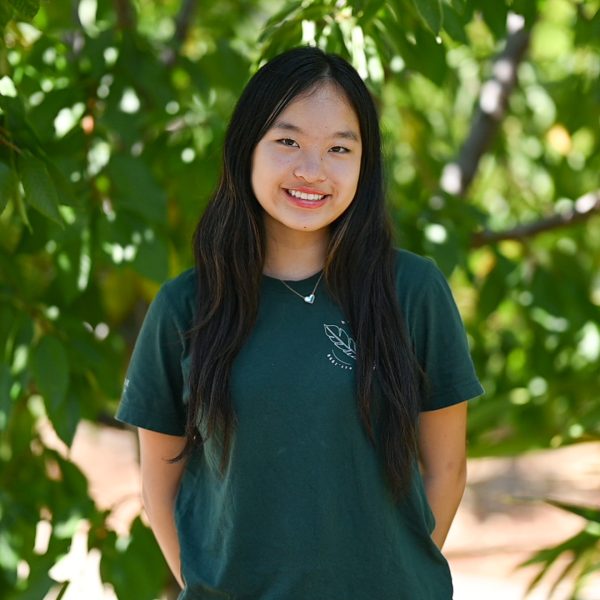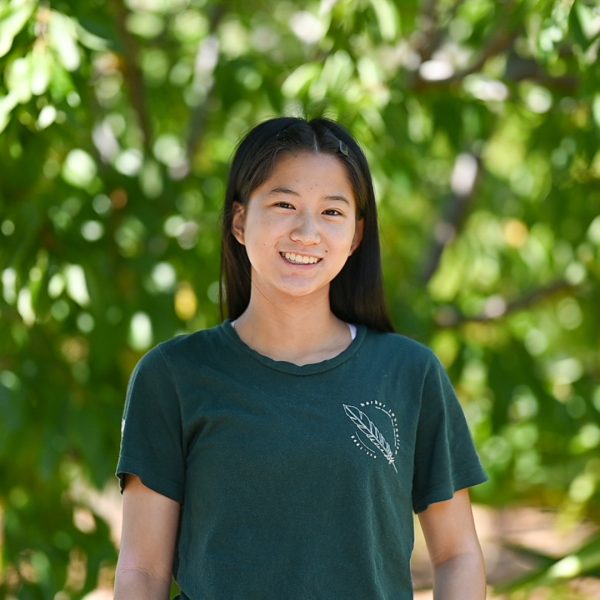Over 800 students and parents attended the 18th annual Harker Research Symposium, themed “The Artificial Intelligence Revolution,” organized by the Women in STEM club on April 13 from 8 a.m. to 5 p.m. at the upper school.
WiSTEM members spent the prior week preparing for the symposium by setting up gift bags and directional signs as well as training for events. During the symposium, they moderated talks, led STEM demonstrations for younger students and sold popcorn and cookies to fund high school student Lynne Okongo’s education at Harker’s sister school in Kenya, the Women’s Institute for Secondary Education and Research.
The symposium showcased keynotes from professionals in industries from tech to biology. Following an introduction from Upper School Science Department Chair Anita Chetty, Zoom Chief Technology Officer Dr. Xuedong Huang kicked off the event with an opening keynote address about generative artificial intelligence in the Patil Theater. In line with this year’s symposium theme, Dr. Huang described the past, present and future of AI and his journey from working at Microsoft to his current position at Zoom.
“What’s the challenge of doing research on AI?” Dr. Huang said during his speech. “You can see you have to have deep insight, you have to challenge the status quo, you have to rely on the data, you have to federate.”

After Dr. Huang, founder of Diffuse Bio, alum Dr. Namrata Anand (‘10), gave a keynote on how Harker influenced her career interest and her research on creating generative AI systems for her company.
Stanford University Professor of Computer Science and Electrical Engineering Dr. Chelsea Finn demonstrated the intricacies of deep neural networks with a quadruped robot that jumped and moved in various directions.
Visitors attended student-run workshops and information sessions throughout the day, like biology teacher Dr. Matthew Harley’s talk about Harker’s new DNA sequencer. Other workshops included AI club officers’ “AI for Beginners,” WiSTEM members’ “AI for Middle Schoolers” and Anika Mantripragada (12)’s “Introduction to Medical Illustration.”
2023 Regeneron International Science and Engineering Fair George D. Yancopoulos Award winner Kaitlyn Wang (12) and 2024 Regeneron Science Talent Search third place winner Michelle Wei (12) presented their projects and personal journeys virtually. Kaitlyn spoke about her experience in earth and planetary sciences, while Michelle explained her math research about second-order cone programs. Ella Yee (12), Melody Yin (11), Saanvi Bhargava (11), Tiffany Gu (11), Ariel Zhang (10), Krish Nachnani (10) and Linda Zeng (10) also presented their research in-person through speaker events, and students from grades eight through 12 set up tri-fold posters of their research projects and presented them to passersby in the Auxiliary Gym.
“Having all these different perspectives and people with different interests is really great,” student presenter Hasini Namala (11) said. “I was looking around and literally every project is so different, but there’s just so much to learn. Once we come together, it’s amazing.”
The symposium featured booths and interactive displays from twelve corporate exhibitors, including Complete Genomics, Netflix and Stemmera in the Nichols Atrium.
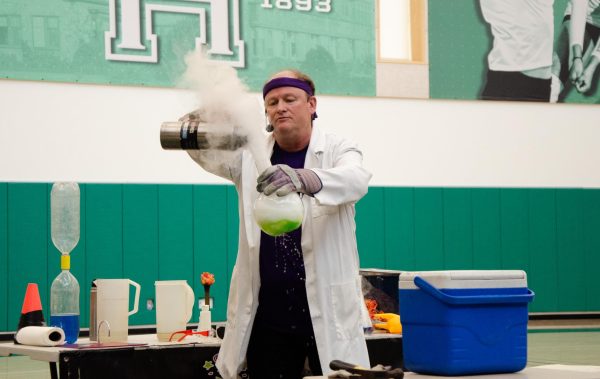
Upper school head Paul Barsky moderated an AI Panel, focused on the ethical considerations of AI, featuring Alex Iftimie from OpenAI, Shiva Shivakumar from Stanford University, Chengming Ren from Fellows Fund, Assistant Head of School Jennifer Gargano and AI club president Aniketh Tummala (12) in the Patil Theater.
In the Athletic Center, scientific magician Jordan Reading, known as “The Science Wizard”, hosted an interactive magic show, demonstrating the special properties of dry ice and shooting rings of smoke into the audience.
“I really liked the magic show with all the science stuff they did in the gym,” Allen Fan (6) said. “[Reading] did a bunch of cool experiments, especially in the smoke one, and I had a lot of fun.”
In addition to the magic show, WiSTEM organized an array of STEM Buddies stations to introduce younger students to science-related concepts. They introduced a new station this year, the periodic table in upstairs Nichols, where club volunteers explained fun facts about the elements and listeners were able to touch samples like an iridescent bismuth crystal.
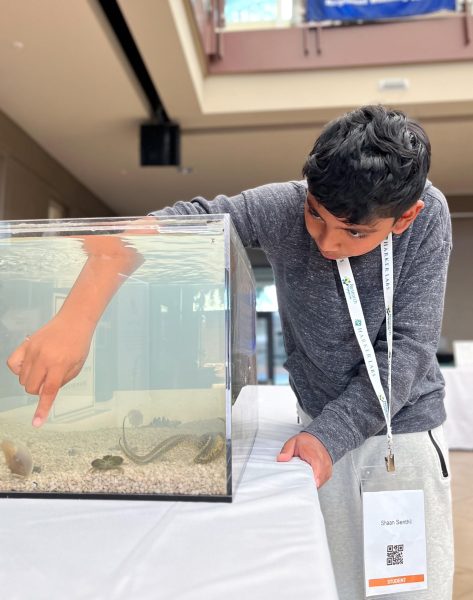
“[The periodic table] has the short name as well as the full name of the displayed elements, and it’s a very nice presentation,” parent Amy Wang said. “[When I was this] age, I was learning elements from the books and seeing photos, but [this] gives you a really concrete and textured idea about what the elements are.”
The event concluded with a research panel of student researchers Arjun Gurjar (12), Sasha Masson (12), Arnav Swaroop (12), Jacqueline Huang (11) and Melody, along with Sasha’s mother Geeta Hiremath.
“I’m most proud of how successful the symposium was this year, and how all of the changes we implemented had a meaningful impact,” WiSTEM co-president Sahngwie Yim (11) said. “We had tons of new speakers and events, and we implemented a lot of new workshops that were incredibly popular. I was really proud seeing everyone come together and put in their full effort to put on such a great event.”


















![“[Building nerf blasters] became this outlet of creativity for me that hasn't been matched by anything else. The process [of] making a build complete to your desire is such a painstakingly difficult process, but I've had to learn from [the skills needed from] soldering to proper painting. There's so many different options for everything, if you think about it, it exists. The best part is [that] if it doesn't exist, you can build it yourself," Ishaan Parate said.](https://harkeraquila.com/wp-content/uploads/2022/08/DSC_8149-900x604.jpg)




![“When I came into high school, I was ready to be a follower. But DECA was a game changer for me. It helped me overcome my fear of public speaking, and it's played such a major role in who I've become today. To be able to successfully lead a chapter of 150 students, an officer team and be one of the upperclassmen I once really admired is something I'm [really] proud of,” Anvitha Tummala ('21) said.](https://harkeraquila.com/wp-content/uploads/2021/07/Screen-Shot-2021-07-25-at-9.50.05-AM-900x594.png)







![“I think getting up in the morning and having a sense of purpose [is exciting]. I think without a certain amount of drive, life is kind of obsolete and mundane, and I think having that every single day is what makes each day unique and kind of makes life exciting,” Neymika Jain (12) said.](https://harkeraquila.com/wp-content/uploads/2017/06/Screen-Shot-2017-06-03-at-4.54.16-PM.png)








![“My slogan is ‘slow feet, don’t eat, and I’m hungry.’ You need to run fast to get where you are–you aren't going to get those championships if you aren't fast,” Angel Cervantes (12) said. “I want to do well in school on my tests and in track and win championships for my team. I live by that, [and] I can do that anywhere: in the classroom or on the field.”](https://harkeraquila.com/wp-content/uploads/2018/06/DSC5146-900x601.jpg)
![“[Volleyball has] taught me how to fall correctly, and another thing it taught is that you don’t have to be the best at something to be good at it. If you just hit the ball in a smart way, then it still scores points and you’re good at it. You could be a background player and still make a much bigger impact on the team than you would think,” Anya Gert (’20) said.](https://harkeraquila.com/wp-content/uploads/2020/06/AnnaGert_JinTuan_HoHPhotoEdited-600x900.jpeg)

![“I'm not nearly there yet, but [my confidence has] definitely been getting better since I was pretty shy and timid coming into Harker my freshman year. I know that there's a lot of people that are really confident in what they do, and I really admire them. Everyone's so driven and that has really pushed me to kind of try to find my own place in high school and be more confident,” Alyssa Huang (’20) said.](https://harkeraquila.com/wp-content/uploads/2020/06/AlyssaHuang_EmilyChen_HoHPhoto-900x749.jpeg)



